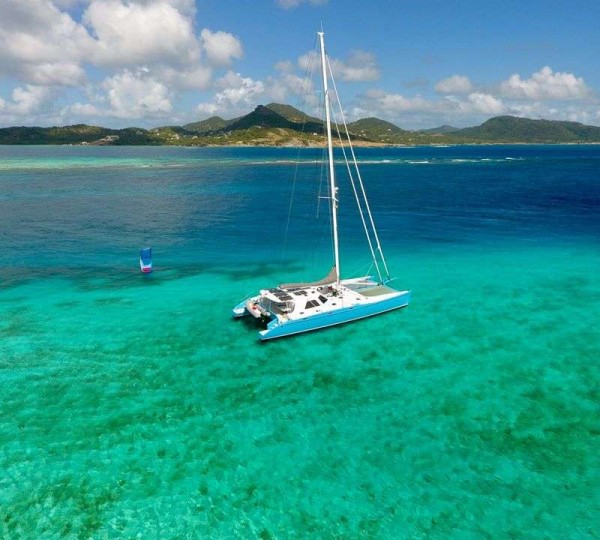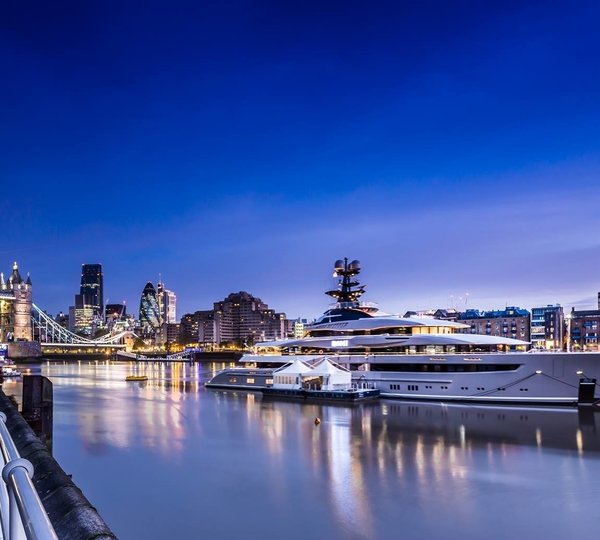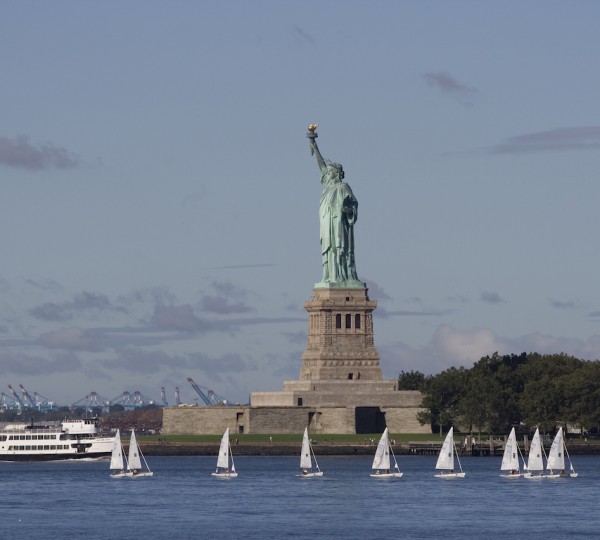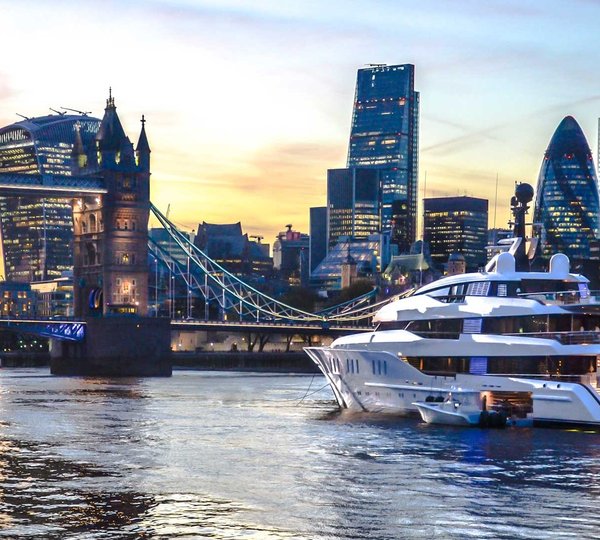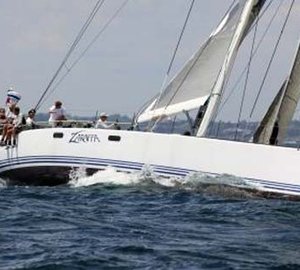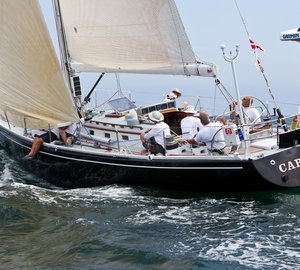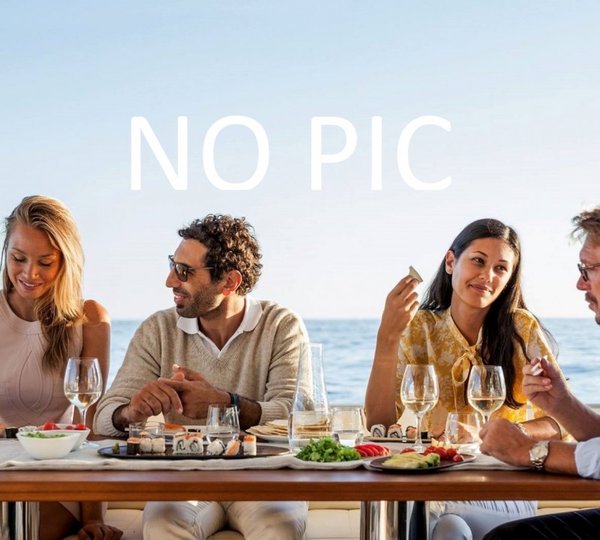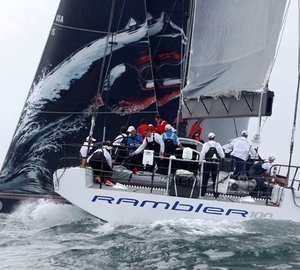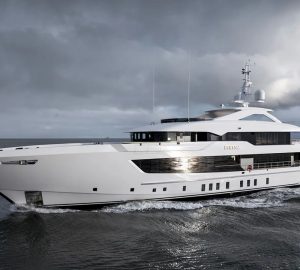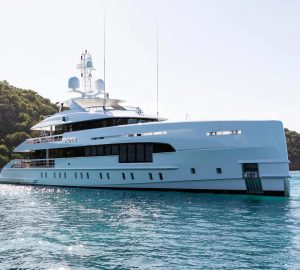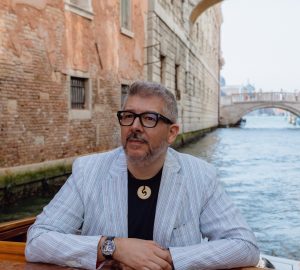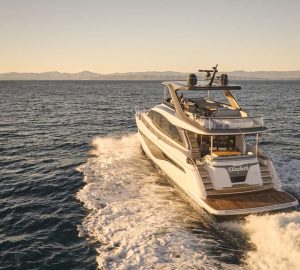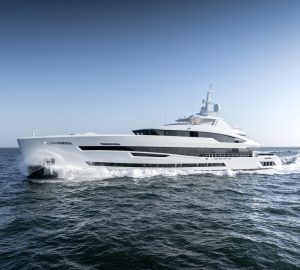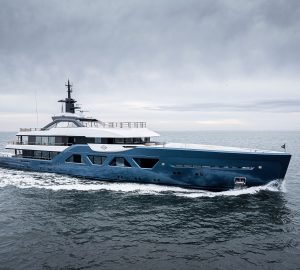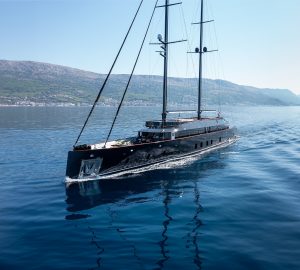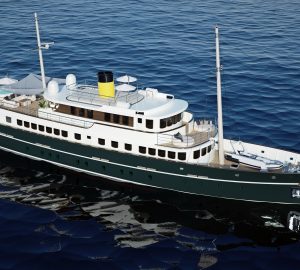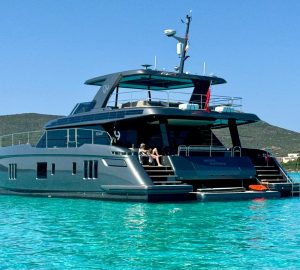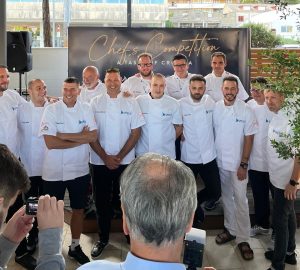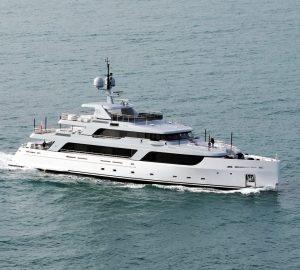Newport, R.I. USA (July 3, 2011) – One of the greatest moments in the history of offshore racing took place today with the final start of the Transatlantic Race 2011 setting six yachts on their course from Newport to The Lizard off the southeast coast of England. And as the six magnificent yachts hoisted their sails you could almost feel the huge crowd of spectators gathered at Castle Hill hold their breath as they observed the fastest ocean-going monohulls to have ever been built in 145 years of transatlantic racing.
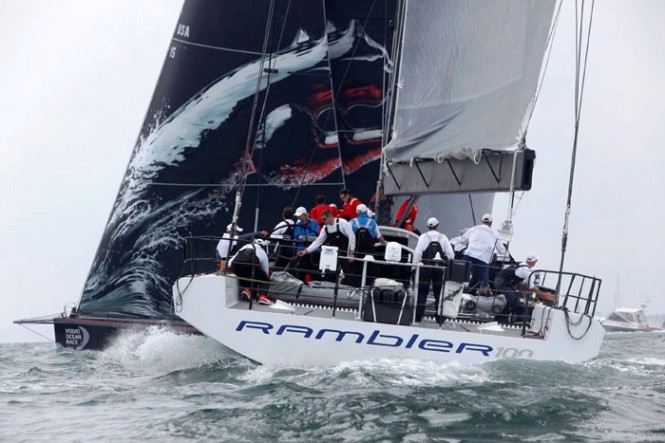
Sailing yacht Rambler and Mar Mostro at the start of the Transatlantic Race 2011 - Photo by Dan Nerney.
Prior to the start, George David (Hartford Conn.), skipper of Rambler 100, paid tribute to the four yacht clubs that came together to make this race a reality. “This race was only conceived 18 months ago and without the support of New York Yacht Club, the Royal Yacht Squadron, the Royal Ocean Racing Club and the Storm Trysail Club, it would have never happened. It is a dream race that has become a reality.”
Clarke Murphy (New York, N.Y.), competed in the previous edition of the race and was delighted to return to take up the reins of sailing yacht ICAP Leopard.
”Leopard has a phenomenal crew who are also a great bunch of guys, and I have been looking forward to this for a very long time. We have done a lot of racing together, but all of those races have been the build up to this. For me and the crew, the Transatlantic Race is what it is all about.”
A weather front arrived as if by magic, and with the wind speed at the top of the rigs approaching 15 knots, the six yachts cruised the starting area like reef sharks ready to attack. As the starting gun sounded from Castle Hill Light, the Maxi fleet powered up and the sound of immense loads echoed across the water as sheets were pulled on and rigs raked back to propel the high-performance racing machines out towards the open ocean. The sheer power on display was awe-inspiring, as the fastest yachts in the Transatlantic Race 2011, searing through the water, foam hissing at the rail, started on their one-way ride across the untamed Atlantic Ocean.
Beau Geste, the Farr 80 skippered by Karl Kwok (Hong Kong), got the best start and sped away toward Brenton Point. Puma Mar Mostro, skippered by Ken Read (Newport, R.I.), was next to cross the line followed by Rambler 100 and ICAP Leopard. Vanquish was caught up in the Maxi mêlée and was stalled as the two 100-footers powered up on either side of the 65’ yacht crewed by the Oakcliff All American Offshore Team. For the young crew aboard Vanquish, this is a ride of their life, lining up against the best in the world.
Beau Geste and PUMA Mar Mostro continued up the right-hand side of the course, playing touch and go with the rocky shoreline, while Rambler 100 and ICAP Leopard seemed locked in their own private tussle as the fleet headed offshore. The magnificent 115’ ketch, sailing yacht Sojana, with a mahogany interior, is far heavier than her sporting rivals and skipper Peter Harrison (Reigate, U.K.) will surely be hoping for more wind.
For the yachts in IRC Class Four, which took the first race start on June 26 and are now a week into their journey, it’s a case of the rich getting richer. Rives Potts Jr. (Essex, Conn.), skipper of Carina, leads the class with only the classic yawl Nordwind for company. British Soldier is now 200 miles astern.
Jazz, the Cookson 50 skippered by Nigel King (Lymington, U.K.), is nearly 700 miles ahead of today’s starters and leads in IRC Class Two. Jazz is struggling for breeze at the moment, but a low-pressure system located just to their north is tantalizingly close. This area of wind is moving west, however, and if they can get to it, they will be carried swiftly along; if they don’t, they will be left to wallow in the short seas and little wind that it leaves behind.
Meanwhile, Huntington Sheldon, skipper of the Reichel Pugh 65, Zaraffa, is a happy man today. Zaraffa is now in the breeze after a day of fickle wind. And, as predicted, the Lithuanian Volvo 60, Ambersail, have made a big gain to the south and have been the fastest boat in class over the last 24 hours.
In the Open Class, Phaedo, skippered by Lloyd Thornburg, has been enjoying some great wind after moving south on Friday afternoon. Superyacht Maltese Falcon, on the other hand, has been playing the shifts up the coastline of Nova Scotia, putting in a myriad of gybes. Those who thought that the 298’ art deco superyacht would be coasting across the Atlantic are very mistaken. The two highly distinctive yachts look like they are coming back together after over 50 miles of separation and it will be interesting to see which one will be out in front. The two Class 40s also parted company after following the same line for the first 48 hours. Concise 2, skippered by Ned Collier-Wakefield (Oxford, U.K.) went south and Dragon did not follow; the two yachts are now 70 miles apart on the race track.
All of the 24 yachts competing in the Transatlantic Race will be carefully planning their next move as they can never fully work out what lies ahead of them. The yachts that have already settled into the race know one thing for certain, the magnificent yachts in IRC One will be coming on fast and almost certainly Rambler 100 or ICAP Leopard will overtake them before long: just four hours into the race, Rambler 100 was exceeding 18 knots boatspeed and had already covered 40 miles.

